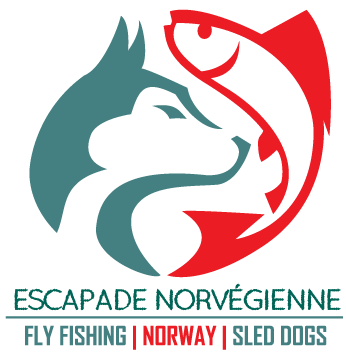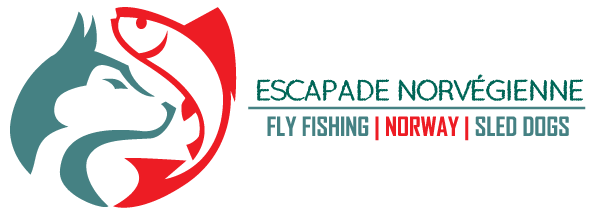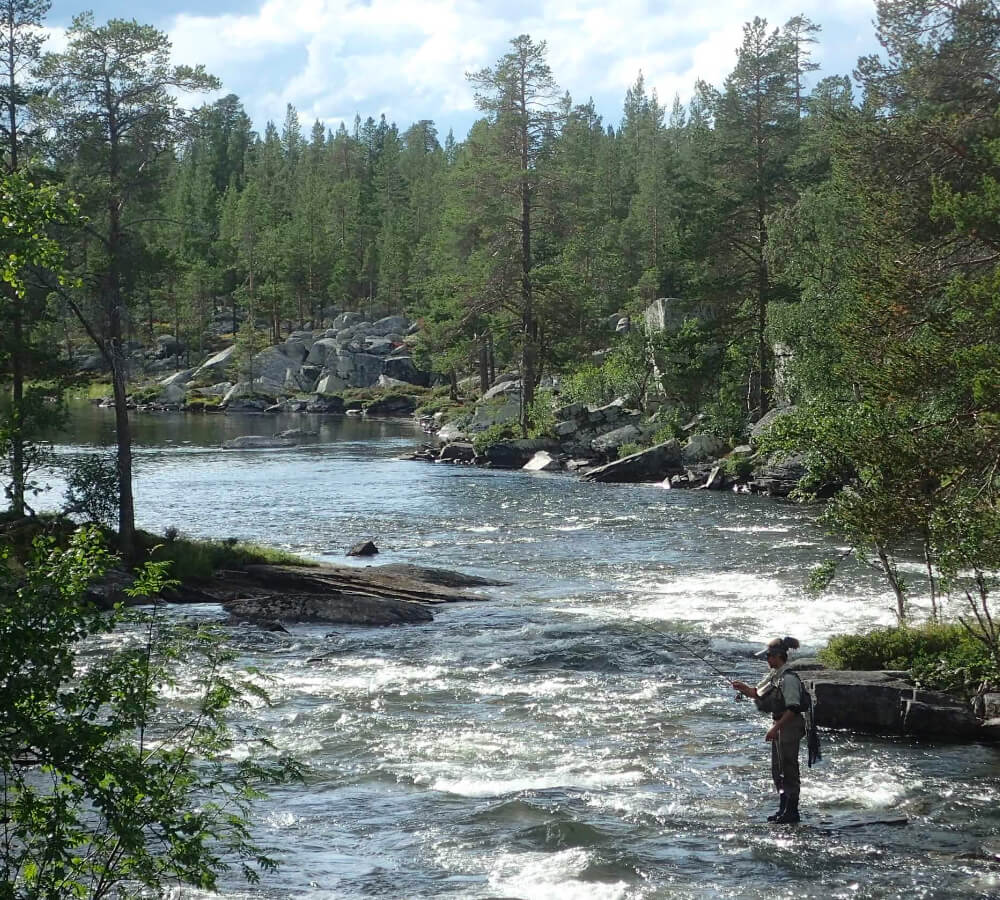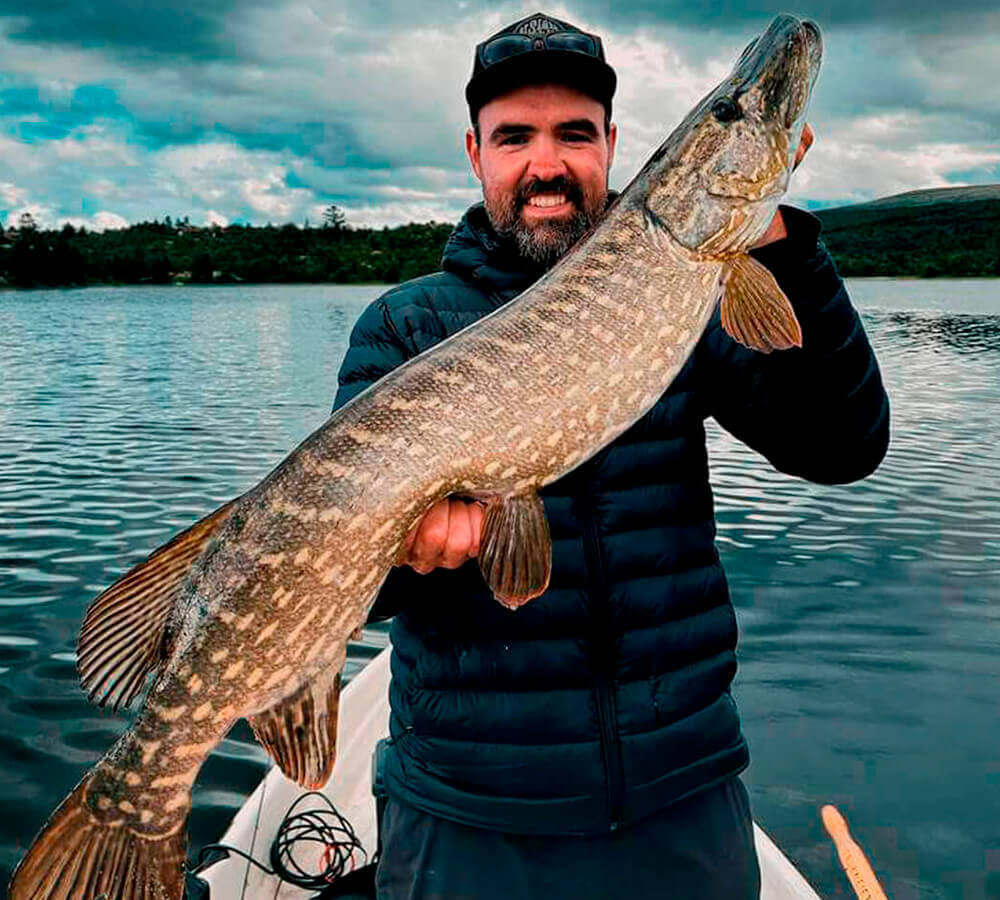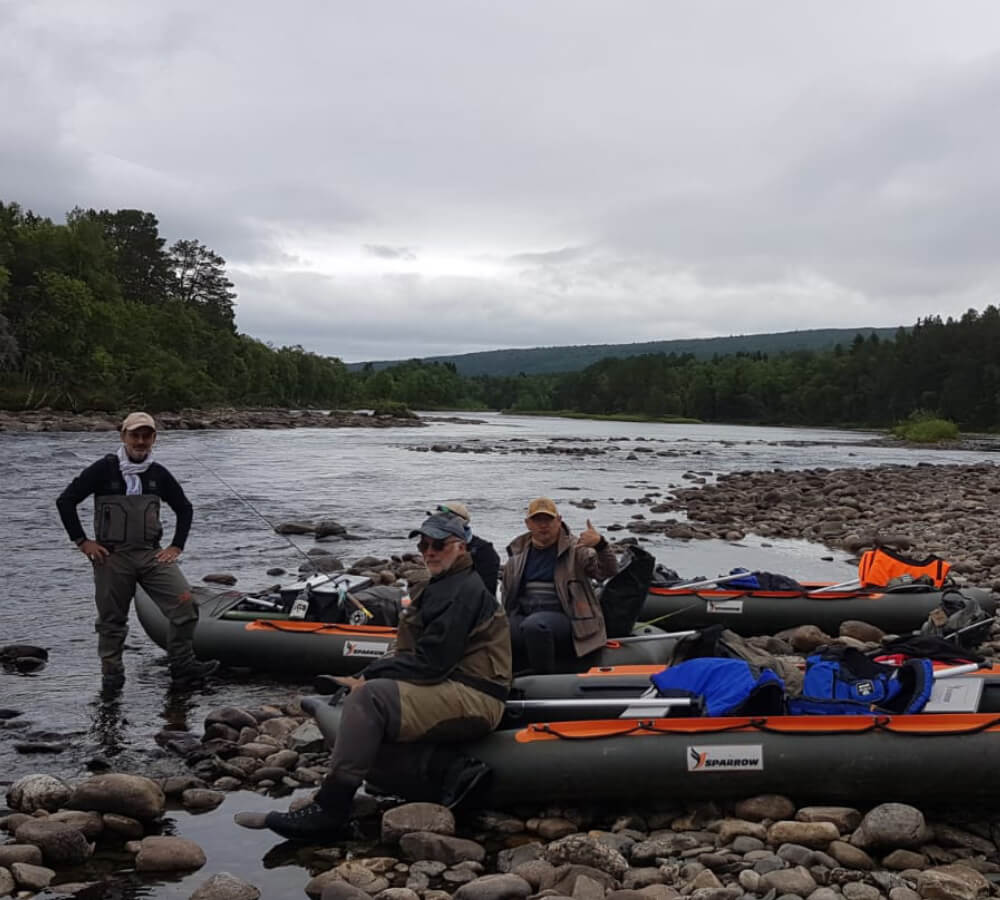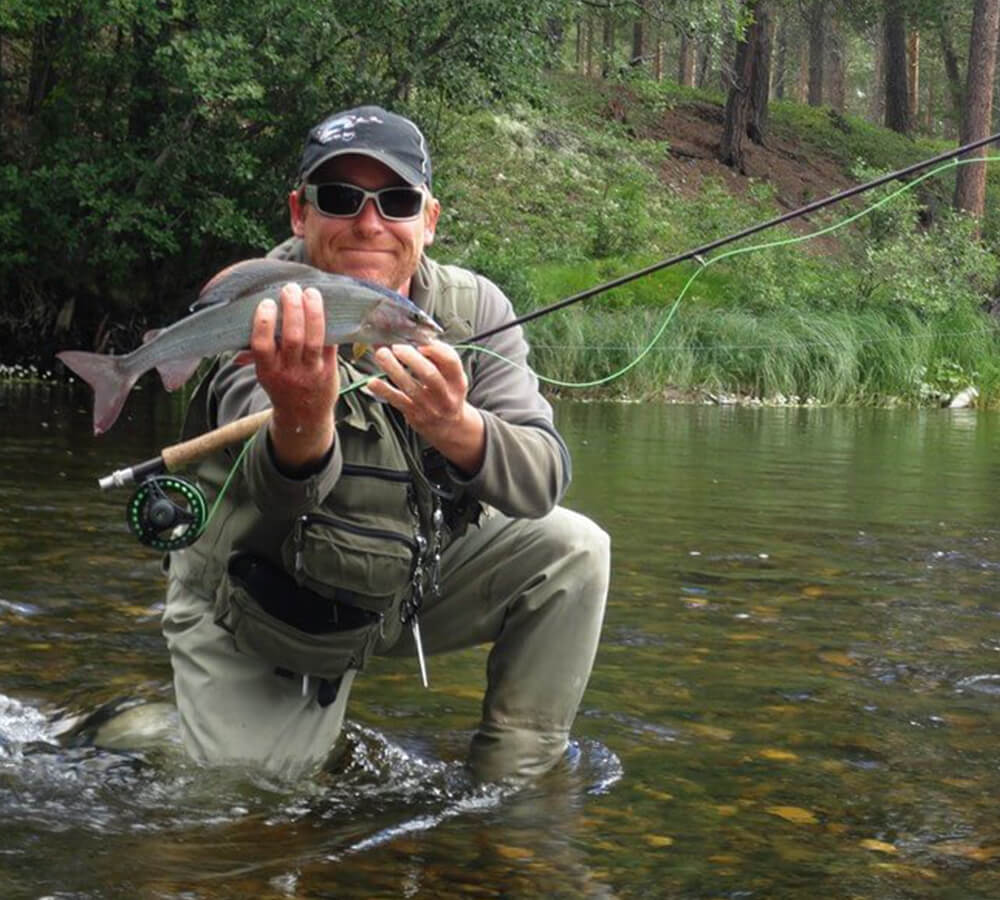#Fly fishing break
Fishing break in a cabin
(New programme) 100% flies
30 min by boat
Crossing a lake
season
price of stay : 2200 €
based on 4 anglers: minimum booking 4 months before the holiday
Prix du séjour pension complète avec accompagnement
(hors boissons)
The Plus

Réf : fishing-itinerant-cabin
Level of difficulty
★ Easy
★★ Fairly easy
★★★ Medium
★★★★ Difficult
★★★★★ Very difficult
travel diary
The budget
options
travel diary
DAY 1:
Greeting at the farm evening meal and possible fishing on the lake depending on arrival time and first night on site.
DAYS 2 to 4:
- Departure by car to the embarkation point and crossing of the lake for 3 days of fishing
- Stéphanie will accompany us with her cooking skills.
- Each day will be devoted to fishing, not forgetting hiking and picking wild berries.
- Returning to the lodge at the end of the 4th day for a soothing sauna.
DAY 5 to 7:
- Itinerant fishing around the house for a survey of the lake and rivers neighbours, Glomma, Hola, and others …
DAY 8:
- Depart from the Lodge for a return to your home.
TO NOTE:
Every day Jean-philippe, Stéphanie and a professional guide will accompany you on this adventure.
The budget
LE PRIX COMPREND / NOT COMPREND
PRICE INCLUDES
- Accommodation at the farm based on two fishermen per room.
- Full board during the fishing holiday (6 Days fishing).
- breakfast
- lunch basket (eat by the water)
- dinner at the farm
- Guidance and accompaniment on the water
- The fishing permit per day for a defined area.
- Changing zones during the day is the responsibility of the person who wishes to do so
- For example 5 days – Glomma and 1 day Hodalen
- A boat with electric motor, a canoe, a float tube, for fishing on Lake Hodalen
- One sauna per week
PRICE DOES NOT INCLUDE
- Transportation.
- Alcoholic or other beverages
- A complementary permit for the same day.
- Tips for guides and personal expenses.
- Cancellation, assistance, repatriation and luggage insurance
- Anything not mentioned under “Price includes”.
options
- Extend your trip on request depending on bookings already made for the period.
- An Individual hut with sanitary block in the village of Hodalen (approx 400€)
- Meals at the farm on request (picnic lunch, evening meal)
- If you would like a state-qualified guide to accompany you on your week of fishing (6 days)
- (250€ / Day based on 1 person)
- (350€ / Day based on 2 people)
- (450€ / Day based on 3 to 4 people)
- (400€ / Day based on 6 people)
- Equipment hire (waders, shoes, rods, floats tube, boat, canoe, etc ….)
- Local car hire if you come by train to Tolga
- For all other requests contact us.
{{current_weather.dt | momentjs( atts.date )}}
{{current_weather.temp | temp}} °{{units}}
{{day.dt | momentjs(atts.date)}}
{{day.temp | temp}} °{{day.temp_min | temp}} °{{units}}
{{current_weather.temp | temp}} °
Humidity: {{current_weather.humidity}}%
Clouds: {{current_weather.clouds}}%
Wind ({{current_weather.wind.deg}}): {{current_weather.wind.speed}}{{units_wind}}
Clouds: {{current_weather.clouds}}%
Wind ({{current_weather.wind.deg}}): {{current_weather.wind.speed}}{{units_wind}}
{{current_weather.desc}}
{{day.dt | momentjs(atts.date)}}
{{day.temp | temp}}°
{{day.temp_min | temp}} °
In the summer of 1892, a new existence, vibrant with activity, appeared on the western shore of Lake Femund. The sound of axe and hammer echoed across the pristine terrain, against a sublime backdrop where the sea shone between the birch and pine trunks to the east, while Rendals-Sølen dominated the horizon to the west. The famous “Kresten på haugen“, a skilful lumberjack, had undertaken to build houses for London lawyer brothers Richard Ford Smith and Charles Lassow Smith. Passionate about fishing, the latter had been attracted by the exceptional opportunity to fish in this region.
This was the start of an extraordinary adventure: a 30-minute boat trip across the lake will take us to this historic site. It was here that fly fishing was introduced to Norway by these two English lawyers in 1892. We will spend two nights in this place steeped in history.
<Afterwards, a walk will take us to a magnificent isolated cabin where we will spend two days enjoying the peace and quiet of the placex. We’ll then visit an old Norwegian fishing camp and spend a further two days on a new, smaller river that’s just as rich in fish.
Finally, we’ll return by boat to end our adventure, our heads full of memories before heading back to Escapade. This is how unparalleled wildlife unfolds in the lands of Femund. The Smith brothers were experts. They had spent several previous summers in Engerdal, staying with Ola Thoresen Galten and fishing in the Røa and Klara rivers. Each year, they felt more attached to this wild paradise, nicknamed the “valley behind the mountain”. When opportunities to buy land arose, they seized the chance. They bought land from the Rendølers – their splendid hut is on Enkeseterteigen – and a few hundred metres away is Galthue, offering some of the best fishing on the river. This is where the Trysil – Klara – river begins its long journey towards Värmland and Vänern.
Fishing equipment
FISHING METHODS
Whip fly fishing is the most effective on the routes we offer.
FLY EQUIPMENT
The typical fly rod is a 9 footer for a 4/5 line, but a 10 footer is also very suitable, particularly for nymph fishing with thread. For those who want to try their hand at lake or streamer fishing, and also for larger trout, a 7-power tank rod will do the trick. In this case, use a reel with a plunging line or, better still, a “versi tip” line, i.e. with several interchangeable tips of different densities. For pike, you can also use a set of 8 to 10 gauge line.
Leaders should be long enough, 1.5 times the rod length, and end with 14/16 tips for dry fishing, sometimes 12 hundredths but very rarely 10. You can fish in 14 or even 16/18 hundredths for nymphing with line and reel!
In some parts of these rivers and on many lakes, it is also possible to fish for beautiful pike. In this case, a strong nylon such as 80/100 hundredths or a steel leader with a large streamer will do the trick.
THROWING EQUIPMENT
Light 5/10-gram casts with a 20/22-centimetre reel are ideal for most rivers. For lakes and large rivers, a more powerful rod capable of casting bubbles or rapalas with a 25/28-centimetre line is more suitable. This rod can also be used to fish for pike in lakes and downstream on rivers. Make sure you have a few steel leaders and staple swivels. Ball lures such as Cristal Laser yo Zuri and spinners and wobblers give good results.
THE FLIES
Dry
Large deer sedges such as the Elk Hair Caddis or the Goddard Caddis, mounted on 12 and 10 hooks are excellent for evening shots and in 14/16 during the day.
Duck asses in shades ranging from green to brown via black and yellow and in sizes from 12 to 20 are excellent during the day depending on the hatch. Big flies that float well like parachutes are often caught without a second thought in currents. Classics such as hare’s ears, CDCs and a few chironomid imitations in black, olive and brown also give good results on small streams and lakes.
In nymphs
The big gold helmets pheasant tail and ears of hare in number 12 are well accepted in the currents. Less weighted nymfes are interesting for prospecting the edges and on the big smooths as well as some olive and brown gammares. As a general rule, a small assortment of gold helmets from 2 to 4.5mm will allow you to fish everywhere. A few casters and double balls will complete your outfit and allow you to fish the most powerful currents.
Drowning and streamer
The flies are quite full and the olive, beige and black colours are excellent. On the lake, which is 5 minutes from the farm, adult and emerging sedge imitations are well suited. Black, white and orange rabbit streamers are of interest to large fario! For pike, 4/0 or 6/0 tandem flies and large pink, orange, green and white streamers are excellent. For the more sporty, a few large 4/0 poppers for tropical sea fishing can give you some incredible surface attacks!
THE CLOTHES
It’s advisable to pack a good wading jacket to keep out the rain, as well as warm clothing such as fleece, a hat and gloves – in short, the usual outfit for Nordic countries, where the climate can change, even in summer. After all, it can be very sunny and very cold in the same day!
Neoprene waders are not essential, so opt instead for breathable fishing trousers and fleece underwear, which are more comfortable to wear and make walking easier. When it comes to wading boots, felt soles with studs work best on all types of terrain. Don’t forget to pack a good pair of polarised sunglasses and a cap. A good mosquito spray is essential. And if you really fear these insects, a mosquito net placed over your cap will protect you completely. Products such as 5 sur 5 or insect screen will protect you,
Alternatively, we sell a very effective local product based on essential oils.
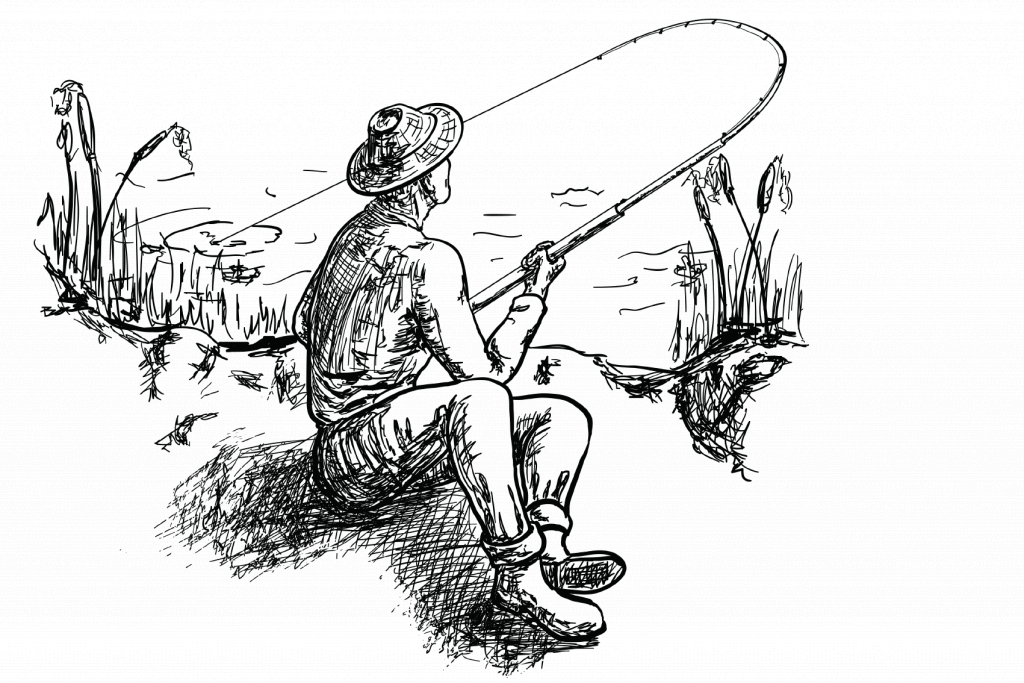
SAISON ET CLIMAT
Depending on the year and snow conditions, fishing starts around mid-June and remains good until early October, particularly for dry grayling. July/August and September are the best months to fish for the three main species: grayling, trout and pike.
fishing zone
On the western shore of Lake Galtsjøen (643 m), a 30-minute boat trip will take us to a historic site. This is where fly fishing was introduced to Norway by two English lawyers in 1892. We’ll spend two nights and three days fishing in this place steeped in history.
route
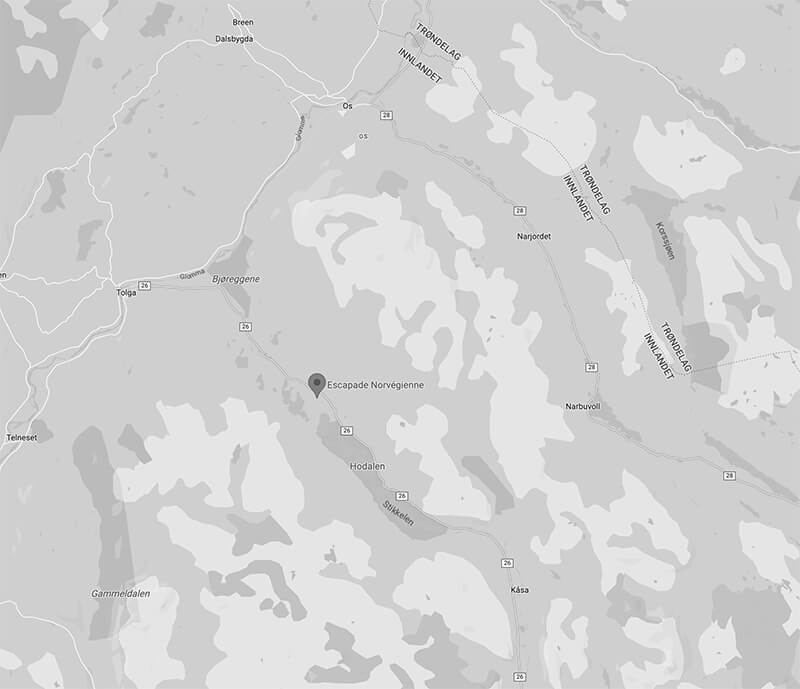
In the event of an established risk or unfavourable weather conditions, we give ourselves the power to take various actions, such as increasing the number of guides on accompanied tours, adjusting the itineraries of our tours, or even temporarily suspending a tour or holiday if we consider that the degree of risk is unacceptable.
Our primary commitment remains your safety and complete satisfaction.
Itinerant fishing
notices customers
Customers who enjoyed this holiday : Fishing in a cabin
Avis EXCELLENT
Basée sur 27 avis Superbe séjour merci à vous tous ! Pressé de revenir !
Superbe séjour merci à vous tous ! Pressé de revenir ! Jeremy Monini2024-07-04An unforgettable stay for flyfishing. The welcome of the owners is warm and helpful. The comfort of the traditional lodge is highly sufficient for June long days of fishing.
Jeremy Monini2024-07-04An unforgettable stay for flyfishing. The welcome of the owners is warm and helpful. The comfort of the traditional lodge is highly sufficient for June long days of fishing. Steph Warfou2024-07-04Jean Philippe n economise pas son temps pour faire découvrir ses coins de pêche dans une nature magnifique. Stéphanie prépare chaque soir un dîner gastronomique. Une semaine de pure détente. Merci pour la gentillesse de votre accueil sans oublier Sophie
Steph Warfou2024-07-04Jean Philippe n economise pas son temps pour faire découvrir ses coins de pêche dans une nature magnifique. Stéphanie prépare chaque soir un dîner gastronomique. Une semaine de pure détente. Merci pour la gentillesse de votre accueil sans oublier Sophie Jean-Luc RETTEL2024-06-30Séjour magnifique chez Jean-Philippe, Stéphanie... et Sophie ! Un lieu magique avec les lacs gelés, un accueil super chaleureux et des activités magiques (chiens de traineaux, ice fishing, rando, barbecues etc...). Nous avons profité à fond en famille. Plus que des vacances : une experiencz dont on se rappellera longtemps ! Merci encore pour l'accueil. Florian
Jean-Luc RETTEL2024-06-30Séjour magnifique chez Jean-Philippe, Stéphanie... et Sophie ! Un lieu magique avec les lacs gelés, un accueil super chaleureux et des activités magiques (chiens de traineaux, ice fishing, rando, barbecues etc...). Nous avons profité à fond en famille. Plus que des vacances : une experiencz dont on se rappellera longtemps ! Merci encore pour l'accueil. Florian Florian Lagleize2024-05-05Great old-time cottage farm house located in a mountainous region. Outstanding views are an obvious consequence, but the main reason we rented the house was for its cozy old-timey atmosphere. There's no running water or gas inside the house, the toilet and shower is outside the house (there is running water there), and the heating is done via an electric stove, so if you're looking for a place to shut off from the world, this is it. It feels very beginning of the 20th century inside, and aside from a few modern touches here and there, you'll feel yourself at your grandma's farm house. Stefanie is an awesome host, we loved the breakfast (it was maybe a bit too stuffy, but that's 100% on us 😄) and the overall experience will definitely leave a lasting memory. Hope to visit again! Ar mīlestību, Antons un Anastasija no Latvijas!
Florian Lagleize2024-05-05Great old-time cottage farm house located in a mountainous region. Outstanding views are an obvious consequence, but the main reason we rented the house was for its cozy old-timey atmosphere. There's no running water or gas inside the house, the toilet and shower is outside the house (there is running water there), and the heating is done via an electric stove, so if you're looking for a place to shut off from the world, this is it. It feels very beginning of the 20th century inside, and aside from a few modern touches here and there, you'll feel yourself at your grandma's farm house. Stefanie is an awesome host, we loved the breakfast (it was maybe a bit too stuffy, but that's 100% on us 😄) and the overall experience will definitely leave a lasting memory. Hope to visit again! Ar mīlestību, Antons un Anastasija no Latvijas! Antons Kijaņica2024-04-22A very cozy place that took me back to my childhood visits to my grandmother's farm. Beautiful location, incredibly delicious breakfast, and a fantastic atmosphere.
Antons Kijaņica2024-04-22A very cozy place that took me back to my childhood visits to my grandmother's farm. Beautiful location, incredibly delicious breakfast, and a fantastic atmosphere. An Ki2024-04-22Une expérience hors du commun aux côtés de Jean-Philippe et Stéphanie pour ces premiers jours de 2024, une impression de bout du monde dans la chaleur de leur maison et de leur accueil. Une expérience privilégiée de découverte de traineau à chiens. Merci à vous
An Ki2024-04-22Une expérience hors du commun aux côtés de Jean-Philippe et Stéphanie pour ces premiers jours de 2024, une impression de bout du monde dans la chaleur de leur maison et de leur accueil. Une expérience privilégiée de découverte de traineau à chiens. Merci à vous Mélanie Barreau2024-01-18Merveilleuse athmosphere dans un paysage sauvage et paisible. Réception admirable de passion par Stéphanie, Jean-Philippe et leur petite Sophie. On reviendra une 4eme fois !
Mélanie Barreau2024-01-18Merveilleuse athmosphere dans un paysage sauvage et paisible. Réception admirable de passion par Stéphanie, Jean-Philippe et leur petite Sophie. On reviendra une 4eme fois ! Michel Renoir2021-09-20
Michel Renoir2021-09-20
Avis EXCELLENT
Basée sur 26 avis 8,65,0Fair
8,65,0Fair Fahad2024-06-298,0Very Good
Fahad2024-06-298,0Very Good Jostein2024-06-2310Exceptional
Jostein2024-06-2310Exceptional Anastasija2024-04-278,0Very Good
Anastasija2024-04-278,0Very Good Oleg2024-04-225,0Koselig plass. Kansje litt mye hundeglam om natten. ☺Ingen frokost,varslet på forhånd. ☹Enklere tilgang til toalett.
Oleg2024-04-225,0Koselig plass. Kansje litt mye hundeglam om natten. ☺Ingen frokost,varslet på forhånd. ☹Enklere tilgang til toalett. Bjørn2024-04-199,0Wonderful
Bjørn2024-04-199,0Wonderful Marianne2024-03-2910Exceptional
Marianne2024-03-2910Exceptional Jeremy2024-03-128,0☺Очень красивое историческое месть. Старая ферма, которой почти 200 лет. ☹Единственный минус надо было выходить из дома, чтобы попасть в тёплый туалет и душ
Jeremy2024-03-128,0☺Очень красивое историческое месть. Старая ферма, которой почти 200 лет. ☹Единственный минус надо было выходить из дома, чтобы попасть в тёплый туалет и душ Dana2024-02-2610Exceptional
Dana2024-02-2610Exceptional Arve2023-04-0110The perfect hideaway, in serene beautiful nature with a homemade breakfast to die for ☺ I had been on a long roadtrip already, including several workshops (I am a photographer), and was just dog tired and wanted to rest for one night, and then driving from Røros I found this place close to the border, less than one hour away. It is beautifully situated, in serene nature, and although close to Røros, it is the perfect hideaway. Run by a French couple that have found their piece of paradise, running a husky farm among other things. It is an old farm, with hundreds of years of history in its walls, and huge comfortable beds, tough to wake up from. I am not a breakfast person, but Stephanié made the best brunch I have had in a very long time, with fresh home made sourdough bread, wonderful French omelette, cheese, cured meats, lingonberries +++, and all just for me! That meal alone was worth it, so my only complaint is that I couldn't stay longer.
Arve2023-04-0110The perfect hideaway, in serene beautiful nature with a homemade breakfast to die for ☺ I had been on a long roadtrip already, including several workshops (I am a photographer), and was just dog tired and wanted to rest for one night, and then driving from Røros I found this place close to the border, less than one hour away. It is beautifully situated, in serene nature, and although close to Røros, it is the perfect hideaway. Run by a French couple that have found their piece of paradise, running a husky farm among other things. It is an old farm, with hundreds of years of history in its walls, and huge comfortable beds, tough to wake up from. I am not a breakfast person, but Stephanié made the best brunch I have had in a very long time, with fresh home made sourdough bread, wonderful French omelette, cheese, cured meats, lingonberries +++, and all just for me! That meal alone was worth it, so my only complaint is that I couldn't stay longer. Tord2023-03-13
Tord2023-03-13
request for information
All fields marked with an asterisk (*) are mandatory.




